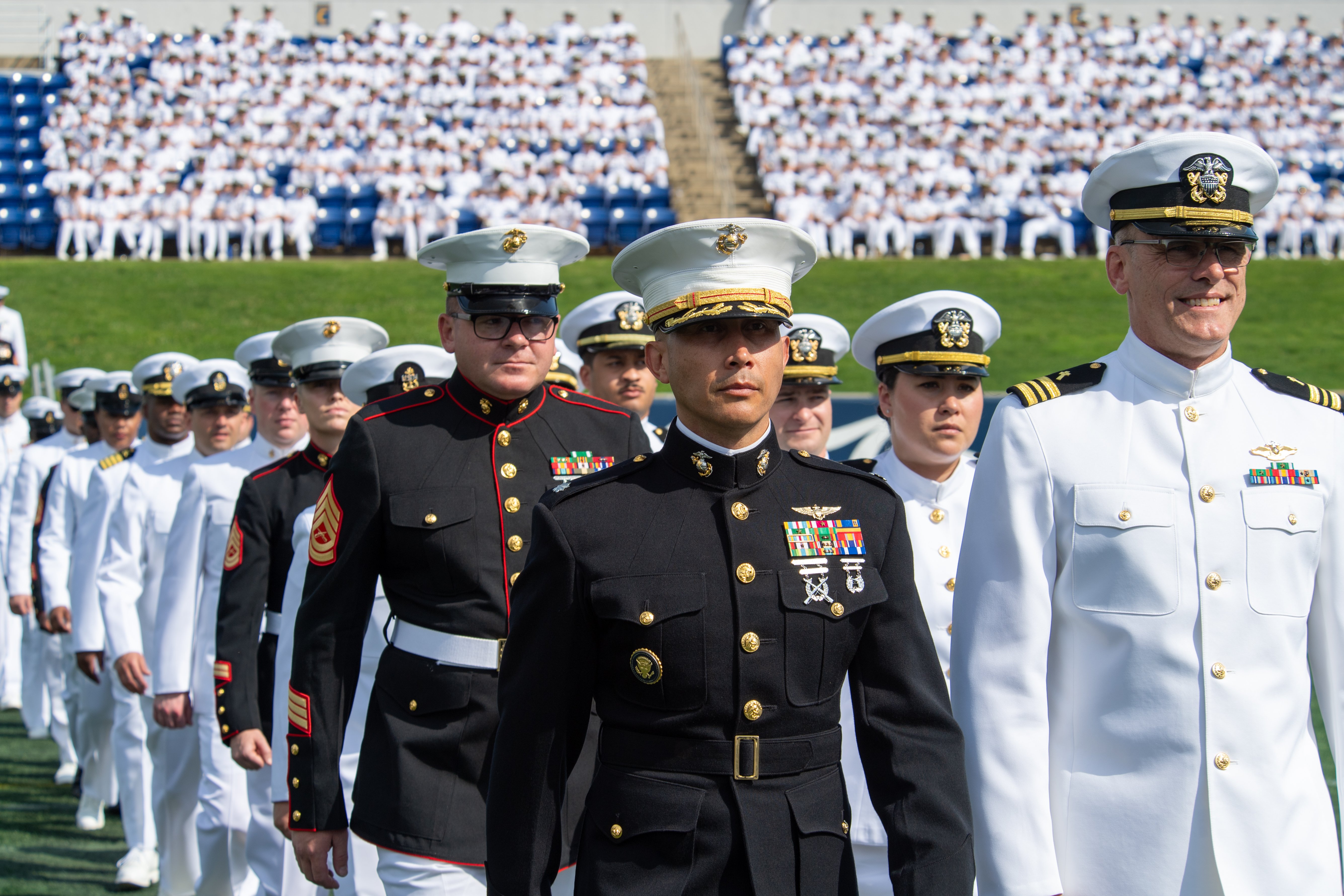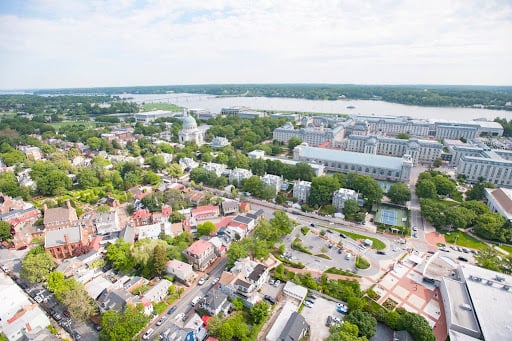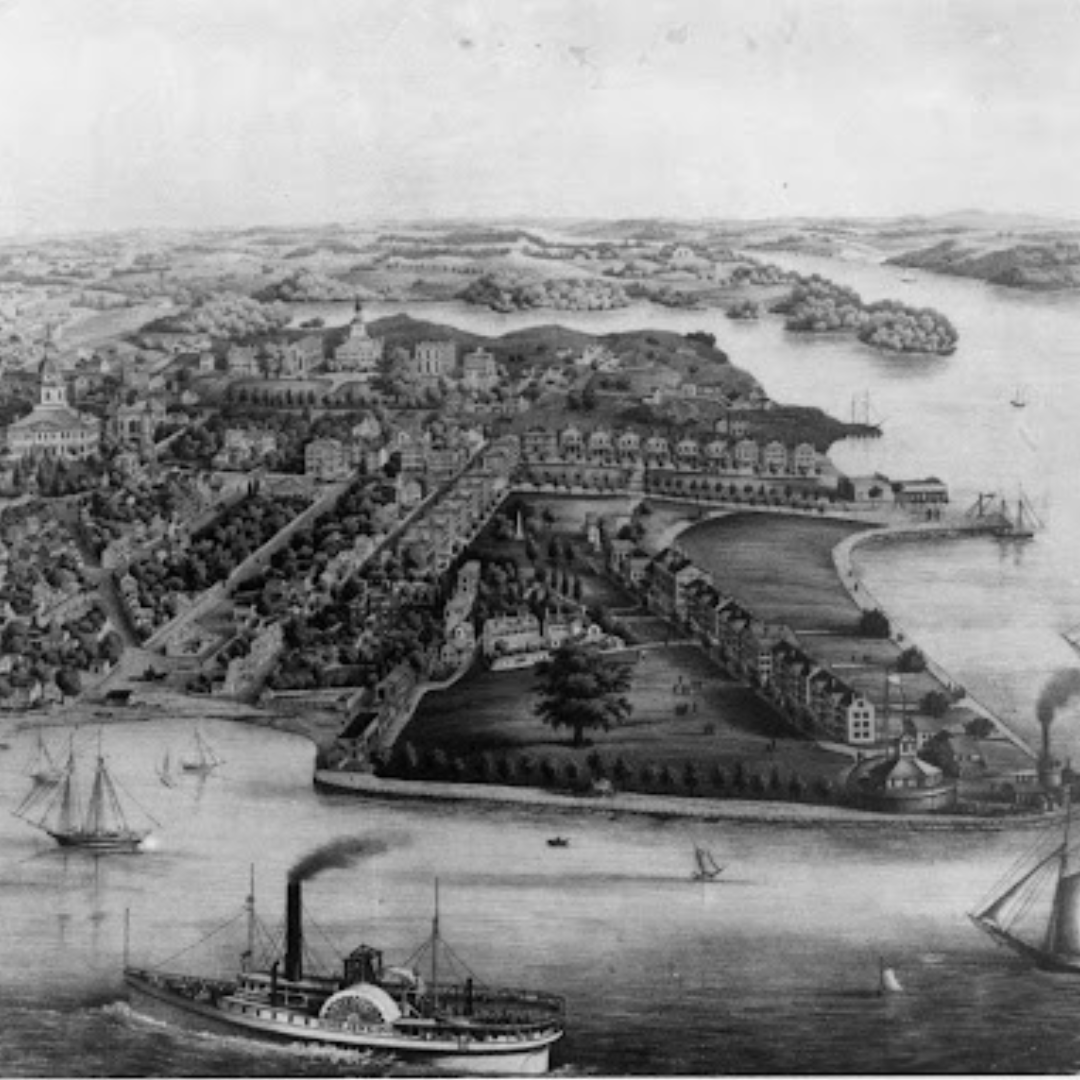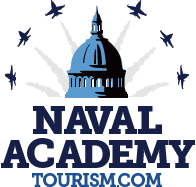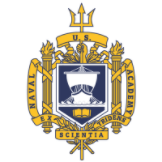The path to joining the Marine Corps ranks runs through Montezuma. It runs through Tripoli. It runs through all the sacred places where Marines have made an impact throughout their 250-year history. For many of the nation’s finest leaders, that journey starts right here at the United States Naval Academy (USNA). Every year, approximately 25 percent of the graduating class earns commissions as second lieutenants in the Marine Corps, a testament to the Naval Academy’s role in shaping the future of the Corps by preparing midshipmen for Marine military officer positions.
The Beginning
Some midshipmen arrive at the Naval Academy knowing they want to pursue a career in the Marine Corps. Others discover this calling during their time on the Yard. Either way, midshipmen must formally commit to this path by November of their 1/C Year (first class or “senior” year) during Service Assignment.
To be considered for commissioning as a Marine Corps officer, candidates must meet specific requirements including:
- Completion of Leatherneck/Marine Air-Ground Task Force (MAGTF) Evaluations
- Endorsement by a Company USMC Mentor
- Demonstrated Leadership (through Leatherneck/MAGTF, AcYear or Plebe Summer billet or varsity sport)
- USMC Physical Fitness Evaluations: Physical Fitness Test, Combat Fitness Test, Obstacle Course, and Endurance Course
- Height/Weight Standards
- Academic and Military Quality Point Ratings (QPR)
- Adherence to Conduct and Honor Standards
Desire and commitment also weigh heavily. Marine Corps mentors evaluate how engaged candidates are in USMC-related activities and how they cultivate their mentor relationships.
Related: Celebrate the U.S. Navy and U.S. Marine Corps’ 247th Birthday!
Marine Training During Summer
Marine Corps training at the USNA goes beyond classroom lessons. Midshipmen receive hands-on exposure through several unique summer training programs:
PROTRAMID (Professional Training of Midshipmen)
Before their sophomore year, third-class midshipmen participate in PROTRAMID, which introduces them to the variety of roles junior Marine Corps officers in the Fleet Marine Forces can acquire.
Midshipmen receive ground training in Marine Corps weapons and equipment, work with Marines of all ranks in both field and garrison environments, and are immersed in USMC-related activities. They will learn the basic theory and fundamentals of the MAGTF.
Those interested in becoming Marine officers experience:
- Weapons Handling
- Indoor Simulated Marksmanship Trainer
- Fire Team and Squad Tactics, Techniques and Procedures
- Fixed-Wing Static Display
- Rotary-Wing Static Display
- Air Traffic Control Tower and Radar Room Tour
- Marine Corps Recruiting Depot Museum Tour
- Marine Corps Recruiting Depot Recruit Processing Brief
- Amphibious Assault Vehicle Rides and Static Display
- V-22 Osprey Rides
- CH-53 Helicopter Rides
- Military Operations in Urban Terrain Training
- Night Vision Goggle Training
- Artillery Static Display
- Marine Special Operations Command Brief
The training is a deep dive into Marine officer positions and shows midshipmen the demands and rewards of a career in the Corps.
MAGTF Summer Training Program
Instead of the usual summer Personal and Professional Development requirement, midshipmen interested in the Marines can opt into MAGTF. This two-phase evaluation includes two sessions that each last two weeks, and midshipmen become immersed with a unit of the Marine Corps’ operating forces for each session:
- Phase One (Screener): Conducted at USNA after spring finals, this phase includes rigorous physical and leadership assessments.
- Phase Two: A four-week deployment with an Operational Force (OPFOR), where midshipmen are embedded with a Marine Expeditionary Force (MEF) or Marine Special Operations Battalion (MSOB). This phase is an invaluable chance for them to be integrated into the Marine Corps, since they are sponsored by company grade Marine Corps officers. They’ll work alongside their sponsors and help execute the duties and responsibilities typical of a newly commissioned company grade officer.
Leatherneck Training
Leatherneck is the defining evaluation for Marine officer candidates. Held at hot and muggy Quantico, Virginia, during the summer before their first class (senior) year, this four-week immersion tests midshipmen mentally, morally, and physically. The mission? “To train, evaluate, advise and mentor 1st Class midshipmen considering a career in the United States Marine Corps.” This group is put to the test through a series of difficult evaluations that ultimately build the camaraderie and esprit de corps for which the U.S. Marine Corps is known.
Candidates are assessed across a variety of different skill sets, including physical training, leadership, and military. The Physical Fitness Test, Combat Fitness Test, Obstacle Course, and Endurance Course test physical strength. To build military prowess, candidates must learn land navigation, combat orders, offensive combat tactics, and basic weapons familiarization. They participate in field exercises spanning several days, which are capped by a scenario in which each midshipman must lead their squad attack on an objective. To grow their leadership skills, midshipmen receive tutoring in counseling and evaluating subordinate Marines and developing productive relationships with staff Non-Commissioned Officers (NCOs). Leatherneck is famously hard, and not everyone will make the cut.
Related: Oorah!
Additional Evaluation: Marine Special Opportunities Training Screener
This is another evaluation tool. It’s administered during the fall and spring semesters and includes a number of selective training evaluations. The screener is a half day evaluation emphasizing squad-sized movements under load, physical strength and endurance tests, timed runs through both the obstacle and endurance courses, and M4 service rifle marksmanship. Midshipmen that qualify for the screener may then be selected to attend one of the USMC training schools.
Commissioning and Beyond
Upon graduation, midshipmen who meet all the requirements are commissioned as second lieutenants in the Marine Corps. From there, they attend The Basic School in Quantico - a 26-week course where they acquire general knowledge about the tactical study of land warfare. Then they report for advanced training focused on their particular specialty in the Marine Corps.
Once a midshipman has excelled at this path, they have earned the right to be a part of the world's finest fighting organization: The Few. The Proud. The Marines. While their journey in the Marine ranks is just beginning, they tread the well-worn path of those who have selflessly served before them, and those that continue to serve now.
Support Their Journey
We are proud to support the midshipmen preparing to join the world's finest fighting force. Profits from every meal, tour, and souvenir you enjoy through the Naval Academy Business Services Division help to fund programs that enrich their training. From theater to club sports, your support helps to shape future Marine commissioned officers.
So, whether you’re visiting the Yard, browsing Navyonline.com, or cheering from the stands, know that you are part of a journey rooted in honor, courage, and commitment.
Oorah, future Marines - your path starts here.
-1.png)

